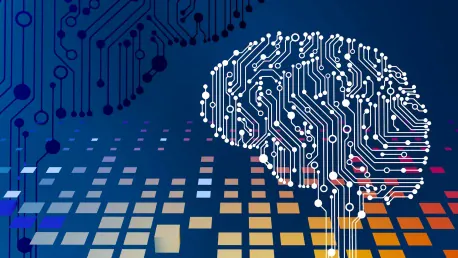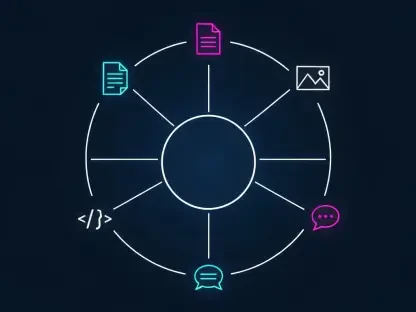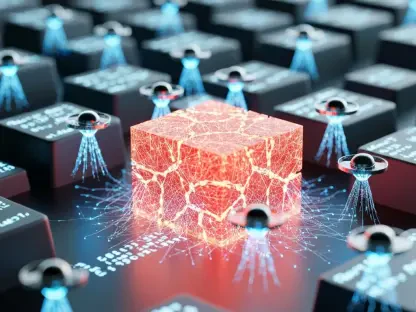Artificial Intelligence (AI) has transitioned from a mere concept in science fiction to a potent force reshaping present-day reality. At the heart of this transformation is Deep Learning, a sophisticated subset of AI that autonomously learns from data to improve its performance over time. This technology influences everything from entertainment to essential services, revolutionizing our daily experiences and various industries.
The Advent of Deep Learning
From Rule-Based Systems to Self-Learning Mechanisms
Deep learning marks a significant evolution from early AI models, which relied heavily on predefined rules. In its nascent stages, AI systems needed extensive human intervention to complete even simple tasks, but deep learning has shifted the paradigm to self-learning, making AI more versatile and powerful. Early AI systems, known as rule-based systems, depended on human programmers to specify the rules and conditions under which the systems operated. These systems had limited flexibility and required constant updates to handle any new scenarios or data inputs.
In contrast, deep learning utilizes neural networks that enable systems to learn from vast amounts of data without explicit programming. This paradigm shift has opened new avenues for AI applications, ranging from facial recognition to natural language processing. The ability for deep learning models to autonomously improve and adapt has revolutionized the way AI can be employed across various sectors, making it a cornerstone technology in modern AI development.
The Core Mechanism of Deep Learning
Deep learning utilizes artificial neural networks that mimic the human brain’s structure to process information. These networks operate in layers, autonomously examining data to recognize patterns. The ability of these models to improve with more data is what makes them exceptionally powerful, enabling them to excel in complex tasks such as image and speech recognition. At a fundamental level, these neural networks consist of layers of nodes or neurons, where each layer processes data and passes it to the subsequent layer.
As the data progresses through the network, it extracts increasingly complex features and patterns. For example, in image recognition tasks, initial layers might identify simple shapes and edges, while deeper layers recognize more sophisticated features like textures and object parts. This hierarchical structure allows deep learning models to make remarkably accurate predictions and decisions. The self-learning capabilities of these networks minimize the need for continuous human oversight, making them a robust choice for automating complex tasks in various domains.
Diverse Model Architectures
Convolutional and Recurrent Neural Networks
Deep learning technologies are built using different model architectures tailored for specific purposes. Convolutional Neural Networks (CNNs) are predominantly used in image and video recognition, essential for applications like facial recognition and autonomous vehicles. These networks excel in processing grid-like data, such as images, due to their convolutional layers that apply filters to detect spatial hierarchies of features. CNNs have transformed fields like medical imaging, where they assist in diagnosing diseases by analyzing radiology scans.
Recurrent Neural Networks (RNNs), on the other hand, are ideal for processing sequential data, making them suitable for language translation and voice recognition. Unlike CNNs, RNNs have feedback loops that allow information to persist, making them adept at handling time-series data. This capability enables them to understand context in sequential tasks, such as predicting the next word in a sentence or recognizing spoken language. The versatility of these architectures underscores the adaptability of deep learning in tackling a diverse range of problems.
Specialized Models for Advanced Tasks
Other deep learning architectures like Generative Adversarial Networks (GANs) and Autoencoders diversify its applications. GANs are famous for generating realistic images and deepfake videos, whereas Autoencoders are vital for tasks like data compression and anomaly detection, particularly useful in cybersecurity and fraud prevention. GANs consist of two neural networks—the generator and the discriminator—that work in tandem to produce high-quality synthetic data. This technology has significant implications for creative industries, enabling the generation of lifelike images and even AI-driven art.
Autoencoders, conversely, are designed to learn efficient representations of data, focusing on reducing its dimensionality while preserving important features. These models are particularly effective in anomaly detection, where they identify deviations from normal patterns in data, making them invaluable in cybersecurity for detecting unusual activities or in finance for spotting fraudulent transactions. The diversity in deep learning model architectures highlights the technology’s broad applicability and its ability to address complex, specialized tasks across various domains.
Transformative Applications
Changing Healthcare and Personal Services
In healthcare, deep learning facilitates early disease diagnosis through medical imaging and enhances personalized treatment plans. Medical professionals are leveraging deep learning algorithms to analyze complex medical datasets, including MRI and X-ray images, to detect abnormalities and diagnose conditions at an early stage, often with greater accuracy than traditional methods. This ability to provide early and precise diagnoses can significantly improve patient outcomes and streamline treatment processes.
Likewise, deep learning powers virtual assistants, chatbots, and language translation services, significantly improving our daily convenience and communication capabilities. Virtual assistants like Siri and Alexa utilize deep learning to understand and respond to voice commands, making everyday tasks more manageable. Chatbots, enhanced by deep learning, can provide customer service that is both efficient and empathetic, handling queries and providing support at any time of the day. Language translation services, such as those offered by Google Translate, employ deep learning to deliver accurate and contextually appropriate translations, bridging language barriers and fostering global communication.
Impact on Creative and Predictive Fields
The creative industry leverages deep learning for generating AI-driven music, art, and realistic digital portrayals. Artists and musicians are incorporating AI to create new works that push the boundaries of traditional artistic expression. For instance, AI-generated music can compose original pieces in various genres, while AI-enhanced tools aid visual artists in creating compelling digital art. This intersection of technology and creativity is redefining the arts and opening up new possibilities for innovation.
Meanwhile, predictive analytics benefit vast fields, from forecasting weather and stock market trends to analyzing consumer behavior, making businesses more efficient and adaptive. Deep learning models analyze large datasets to recognize patterns and make accurate predictions that inform decision-making processes. In finance, these models predict stock movements and assess investment risks, while in meteorology, they enhance weather forecasting accuracy. Companies use predictive analytics to tailor marketing strategies, optimize supply chains, and improve customer experiences, driving efficiency and competitiveness.
Challenges and the Future
Addressing Current Limitations
Despite its transformative potentials, deep learning faces challenges, including its dependence on large datasets and substantial computational power. Training effective deep learning models requires vast amounts of labeled data, which may not always be readily available. Additionally, the computational resources needed to process these datasets and train complex models are significant, often necessitating advanced hardware like Graphics Processing Units (GPUs). These requirements can pose barriers to entry for smaller organizations or those with limited resources.
Moreover, the “black box” nature of its predictions remains a critical issue, especially in sectors where interpretability is crucial. Deep learning models often make decisions based on patterns that are not easily understandable by humans, which can be problematic in fields such as healthcare and finance where decision transparency is essential for trust and accountability. Efforts are ongoing to develop explainable AI systems that can provide insights into their decision-making processes, enhancing their reliability and acceptance.
Towards Explainable and Efficient Models
AI has evolved from a concept often depicted in science fiction to a powerful component of our modern world, fundamentally altering our reality. Central to this evolution is Deep Learning, an advanced subdivision of AI. Deep Learning has the capability to autonomously learn from data, refining its performance over time without human intervention. This highly sophisticated technology impacts all facets of our lives, from entertainment options like personalized streaming services to critical areas such as healthcare diagnostics and financial services. By transforming various industries, Deep Learning doesn’t just enhance user experiences but also optimizes operational efficiencies. AI’s application in essential services has already led to significant advancements in medical research, autonomous vehicles, and even customer service. As AI technology continues to advance, the degree of its influence on society and day-to-day life is set to expand even further, making it an indispensable tool for the future.









